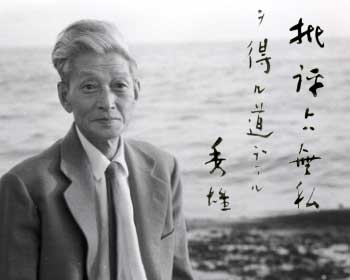What he told me about his youth was quite interesting. "Used to be an angry young man", Nick said. "I used to fight all the time, with these people who had no qualms about cutting down big trees in the mountains for meager "economic" reasons."
Perhaps for being so frequently angry, Nick got the nickname of "Aka Oni" ("Red Devil") from the local residents. An nickname, in the Japanese context, is not without the cute and attractive connotations.
In order to save the forests of Kurohime, he started the The C.W Nicol Afan Woodland Trust, named after the Afan Argoed Forest Park in Wales, his home country.
In my view, the rage of the young Nicol was divine. It was not based on personal interest, such as jealousy, hurt pride, or competition. The rage of the young Nicol was a reflection of his deep love towards Nature, the rich forest in Kurohime in particular.
"I started aiming for a big project", Nick told me. "Then it became smaller and smaller, until it could be contained in a nutshell. Now I would like to do what I can in this forest of Kurohime. I have finally found my home".
Today, Mr. Nicol looks like an old oak tree. The divine rage at young times has taken root deep in the soil, and the foliage of
experience flourishes.





With Mr. Nicol in the Afan Forest in Kurohime, Nagano, Japan.
(photos by Tomio Takizawa)




